(red = background fixed, black = beam injected)
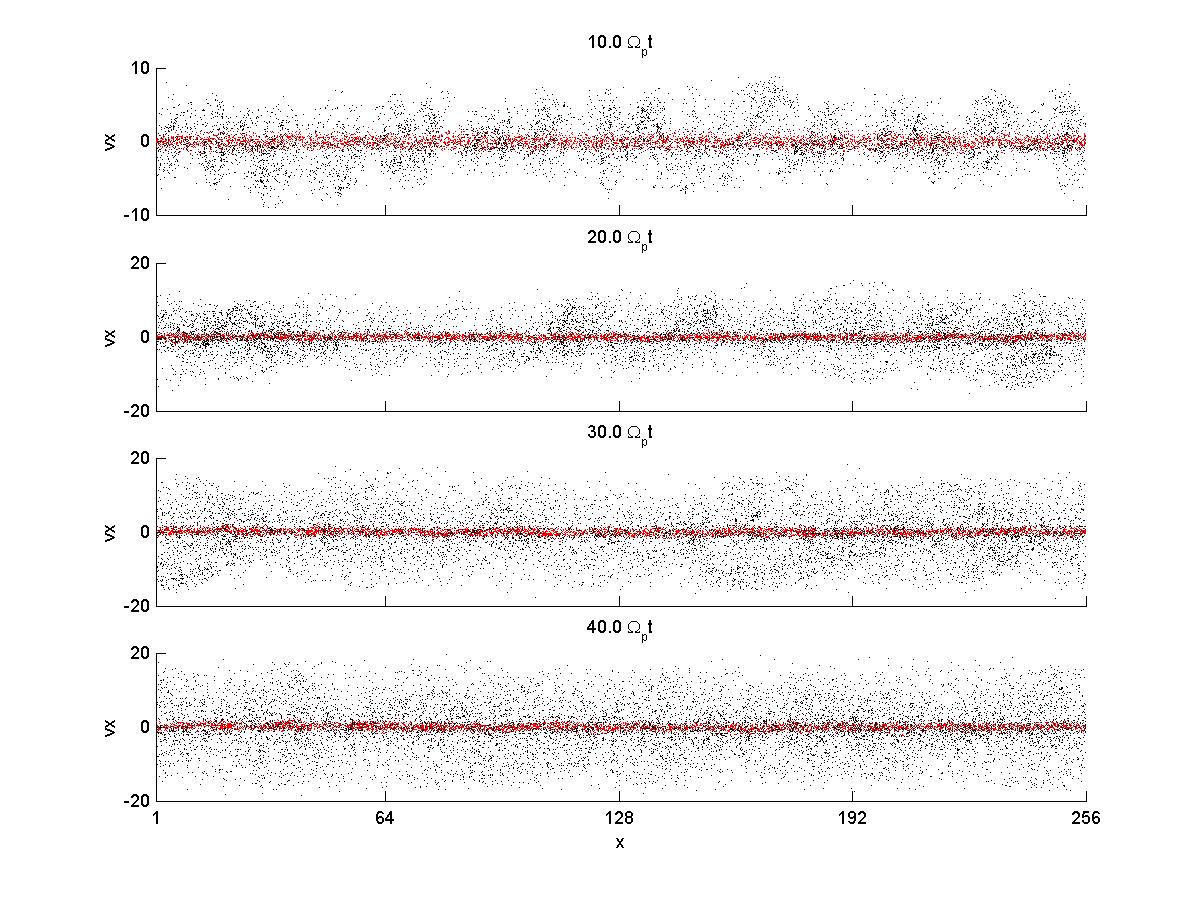
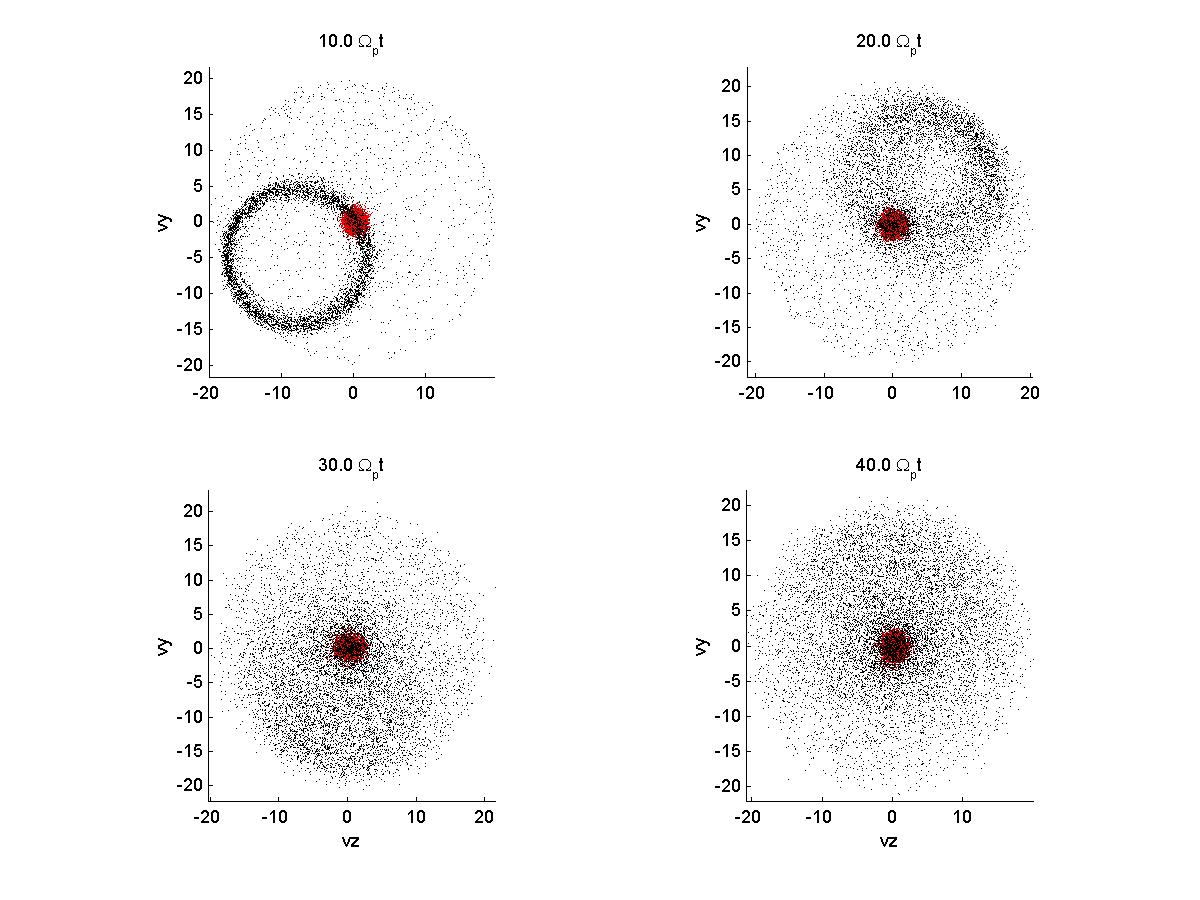
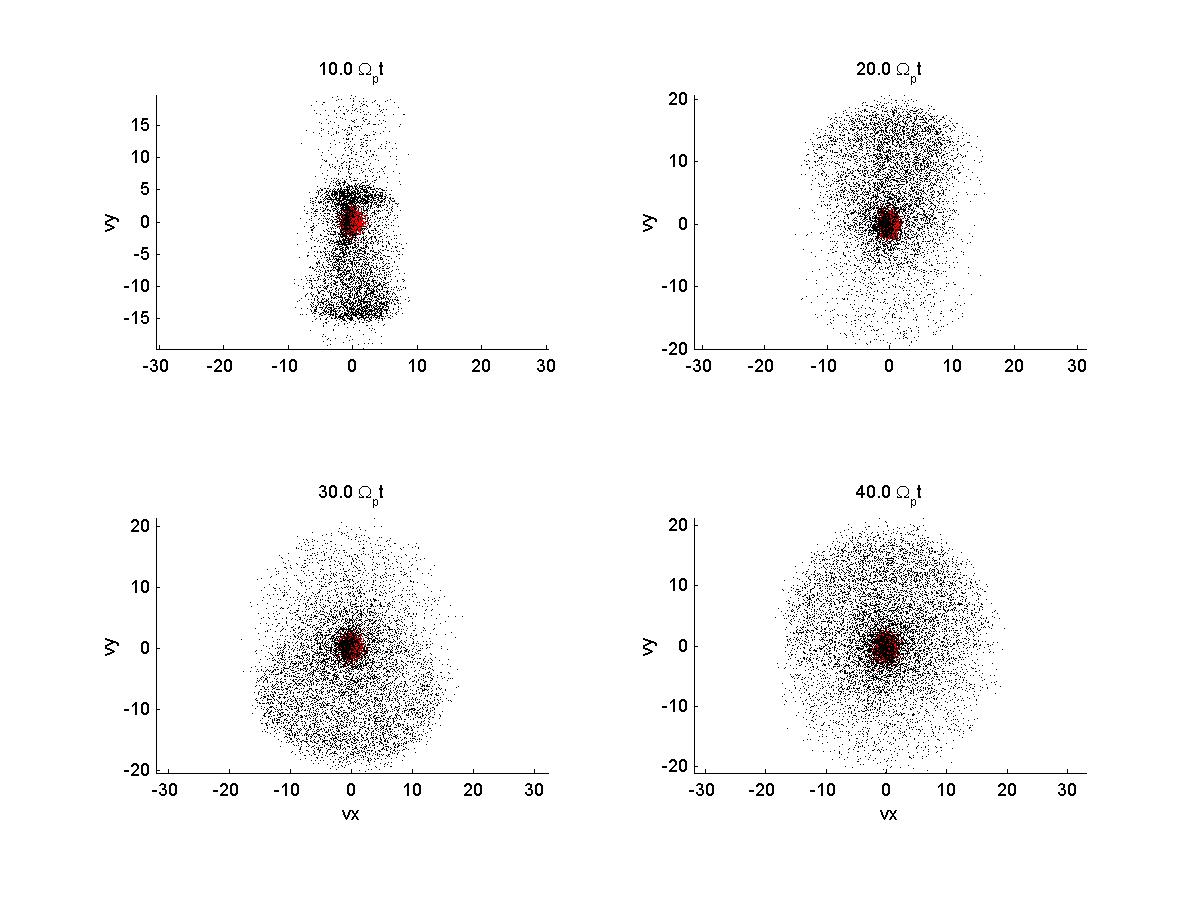
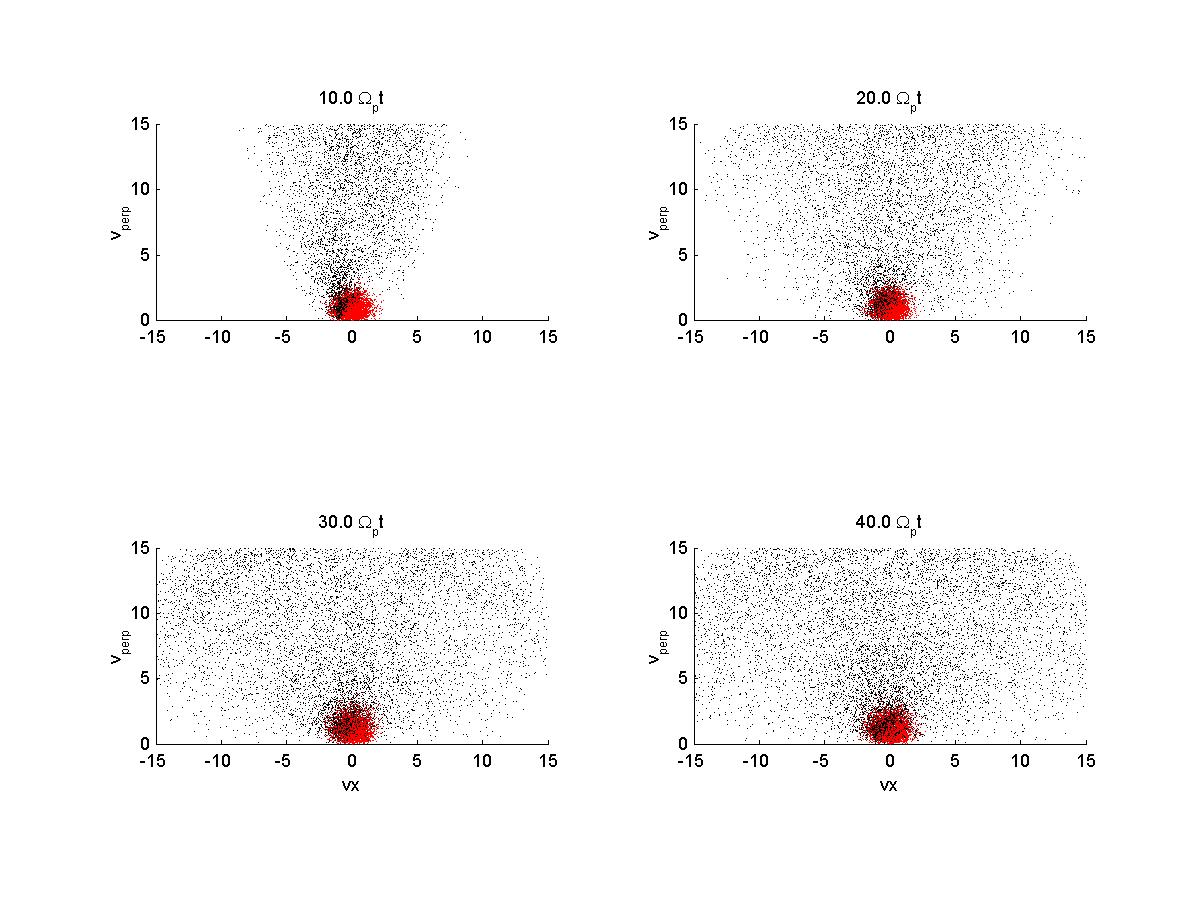
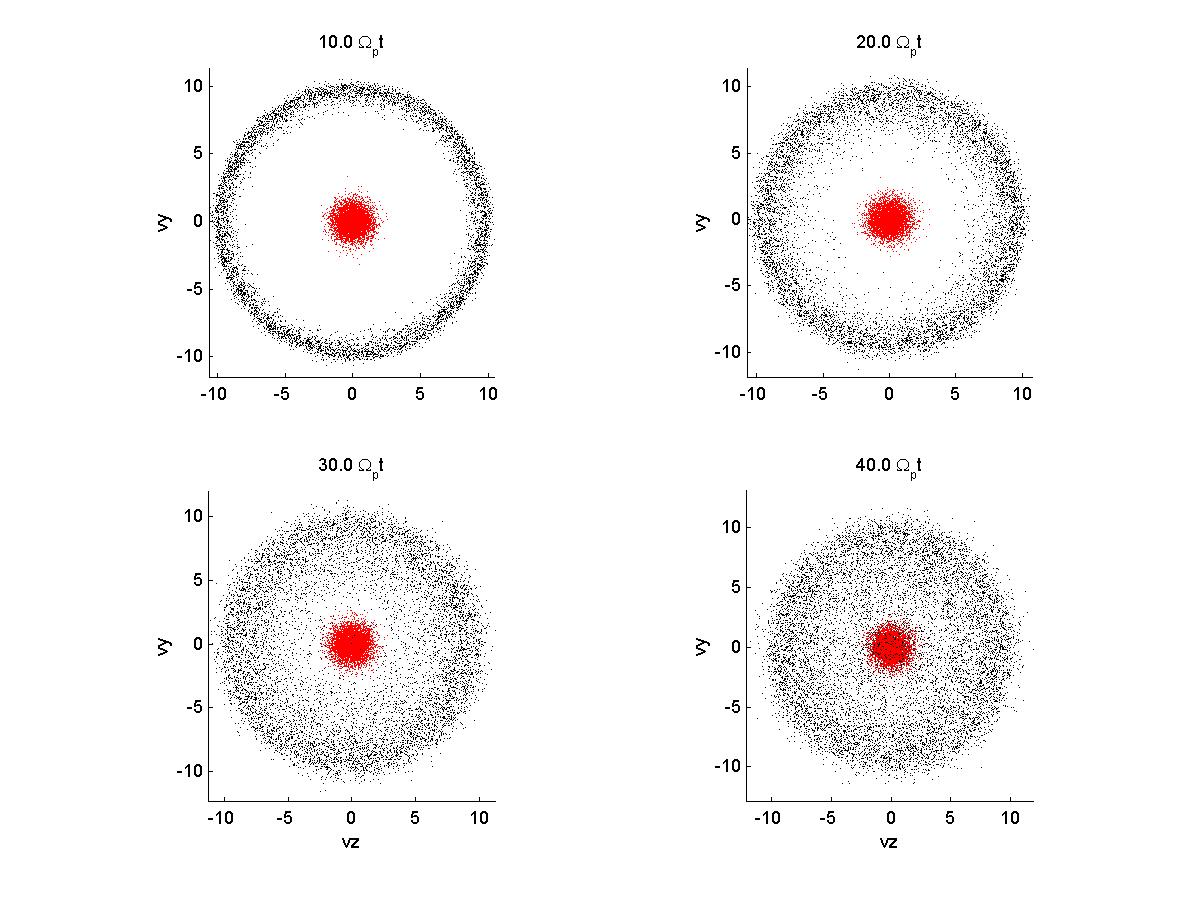
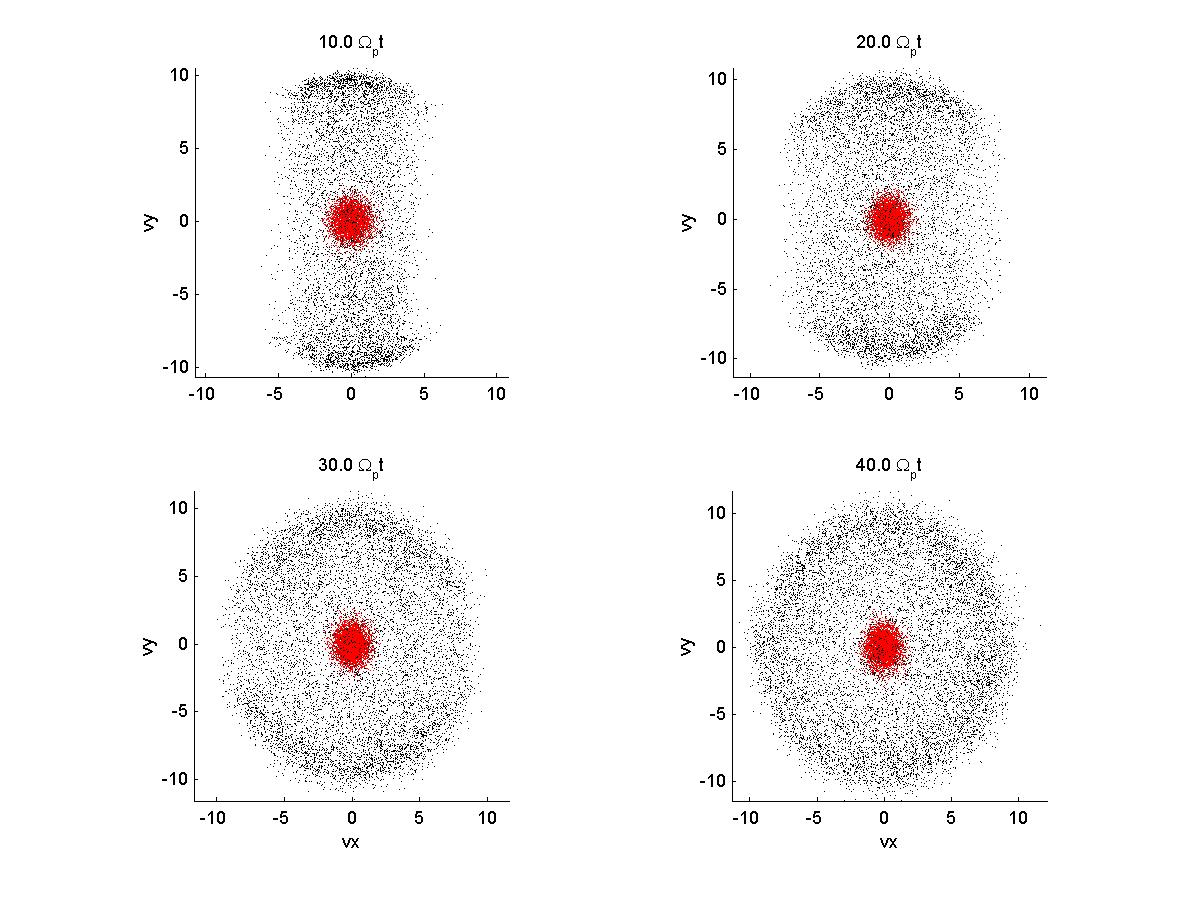
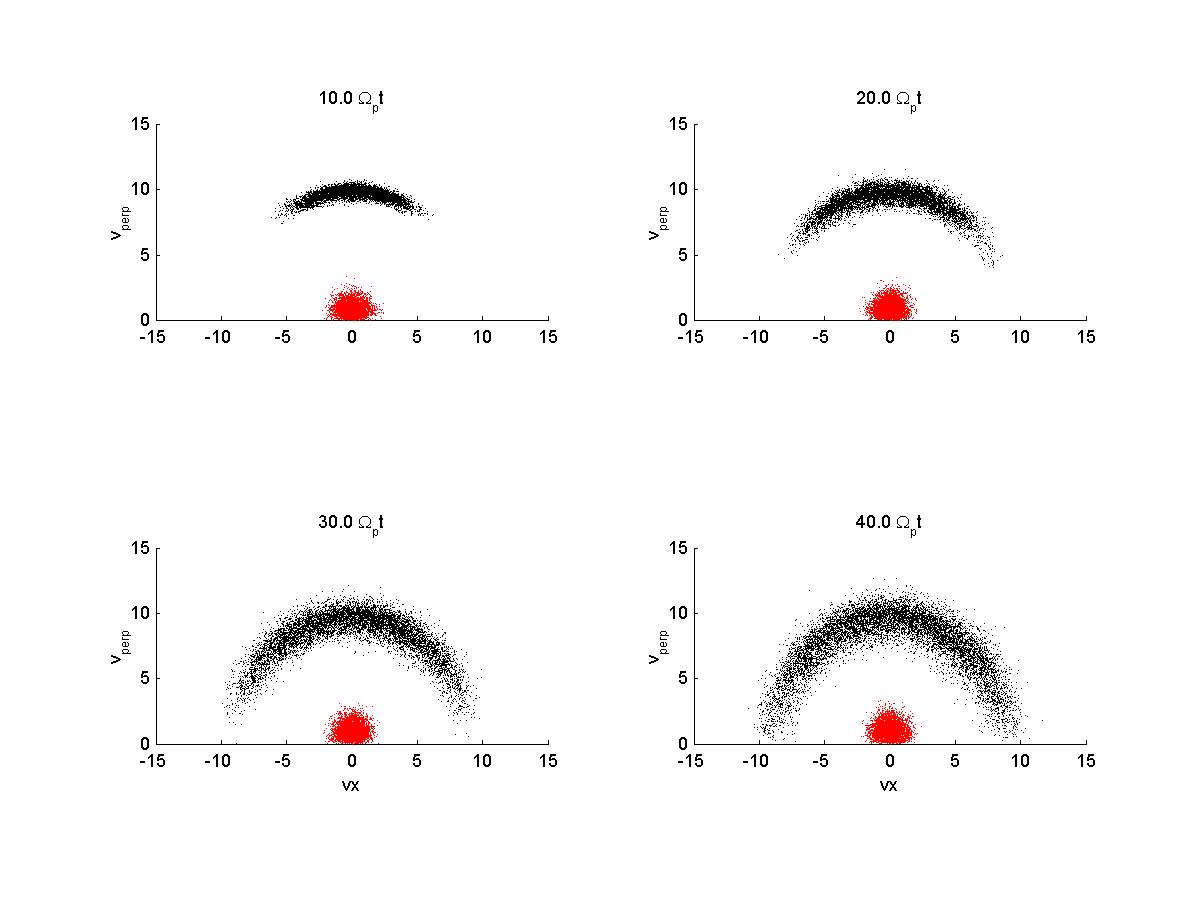

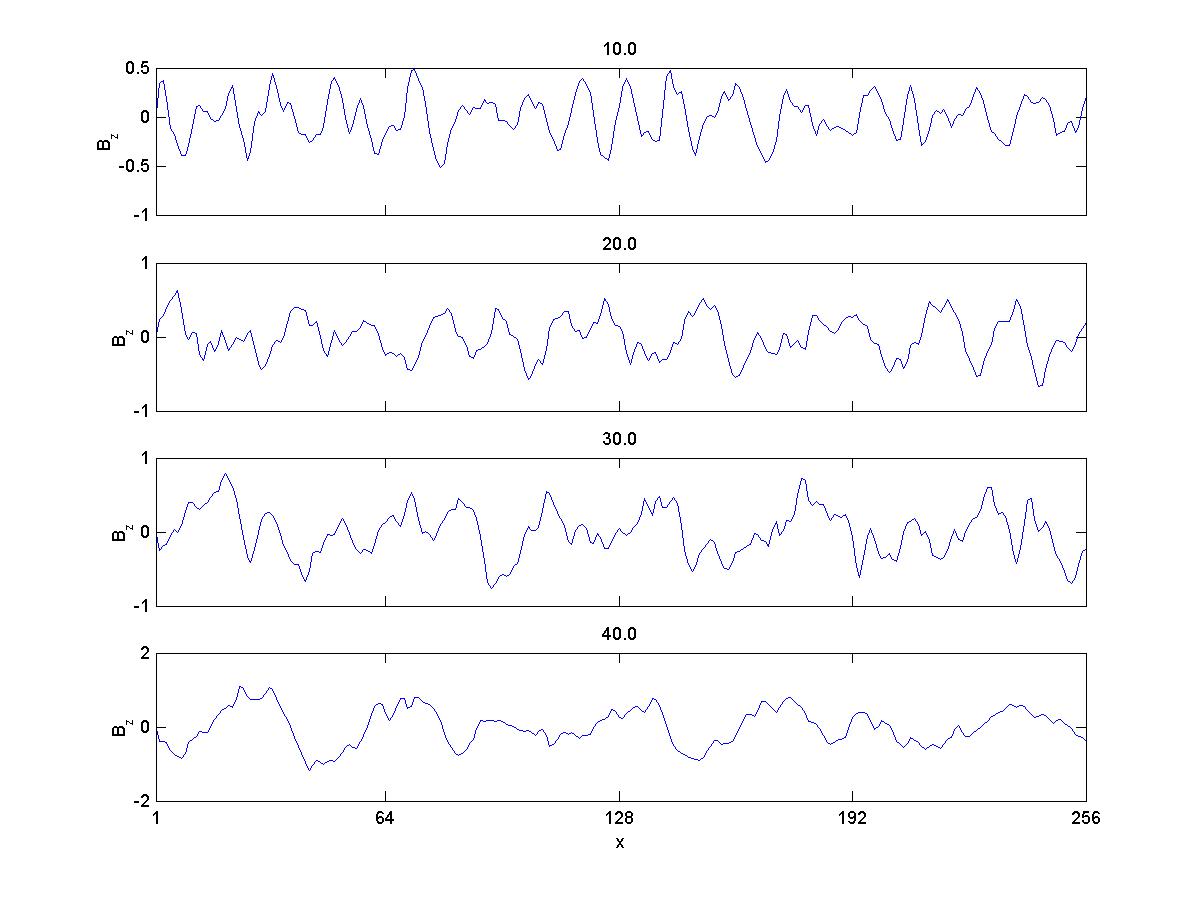
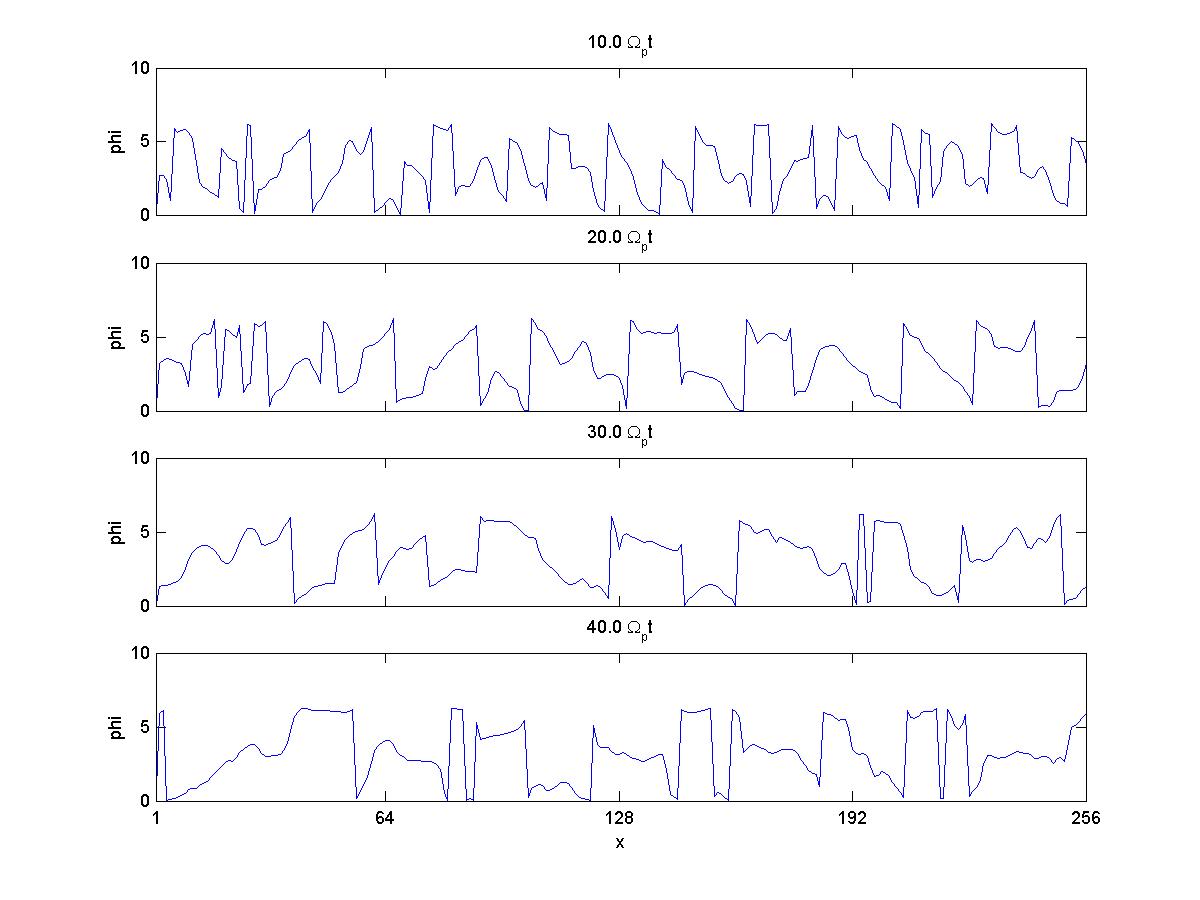


return to index page
This is the first run for the case of perpendicular pickup. The magnetic field
is aligned with the simulation axis, x,and the ion beam/core is along z. The core
ions are initialized as cold maxwellian, while the beam are initialized as a ring beam
with perpendicular velocity of 10 vA and are injected uniformly across the simulation axis.
values in input.h:
ntimes= 400
dtwci= 0.1
nx=256
xmax=256
wpiwci=10000.
nsp = 2
nspec(1)=5120
nspec(2)= 10240
vbspec(1)=0.
vbspec(2)=0.
vbperp(1)= -0.15
vbperp(2)=9.85
dnspec(1)=1.0
dnspec(2)=0.02
btspec(1)=1.0
btspec(2)=1.0
anspec(1)=1.
anspec(2)=1.
wspec(1)=1.0D0
wspec(2)=1.0D0
add_no(1) = 0.
add_no(2) = 2.0e-5*nspec(1)*1200
bete=1.
resis=0.
theta=0.
iemod=0
I use vbspec to be the beam drift velocity parallel to B and vbperp as the velocity perp to B. I modified
the code such that the beam and B are fixed perpendicular to each other (don't use theta). add_no is the injection rate.
The injected ring beam is initialized:
vx = thermal velocity + beam parallel velocity (vbspec = 0)
vy = ring distribution (w/ thermal spread)
vz = ring distribution (w/ thermal spread) + beam perpendicular velocity (vbperp)
Here are the results:
|
1) Phase Space (red = background fixed, black = beam injected) 
| |
2a) Velocity Space 
|
2b) Velocity Space 
|
2c) Velocity space 
| |
| *note that when the variable vbperp = 0 and the ring perp veloc is kept at 10 vA, the ring is centered around the thermal distribution in vy-vz. I assume this difference is from the frame of reference now with the drifting beam. See below: | |

|

|

| |
3a) By
|
3b) Bz
|
3c) Phi
| |
4) B field energy 
| |
5) Fourier modes 
|
return to index page